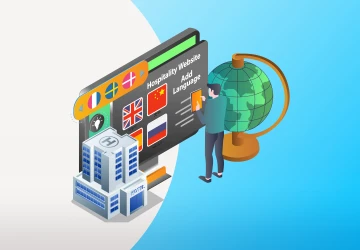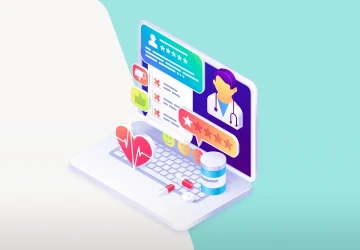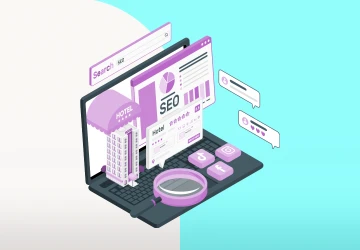SEO for Educational Websites: A Complete Blueprint for Success

Running a school website isn’t easy—you’re constantly updating pages, managing content, and trying to reach the right students.
But if it feels like no one’s finding your site on Google, it’s not because you’re doing something wrong—you probably just need some SEO.
And don’t worry, it’s not as scary as it sounds.
With the right strategy, SEO school websites can start showing up higher on search engines, which means more people will find you.
In this guide, I will walk you through simple SEO education tips to help get you there.
What Is SEO and Why Does It Matter?
SEO, or search engine optimization, is about helping your school’s website appear in Google search results when people are looking for things like programs, scholarships, or degrees.
And the higher you show up, the more likely people are to click on your site.
So, how does SEO work?
It comes down to a few key things:
Finding the right keywords – What are people typing into Google? Things like “top online schools” or “certified IT programs.”
Creating helpful content – Write pages and blog posts that answer those questions.
Building links – When other trusted sites link to yours, Google sees you as more credible.
Making your site user-friendly – That means fast loading, mobile-friendly design, and easy navigation.
Now, why does this matter for schools?
Because students, parents, and even donors use search engines every day to:
Look up trusted education programs or degrees
Search for scholarships or training options
Find events and programs offered by nearby schools
If your school’s website doesn’t show up in those search results, people won’t even know you exist.
That’s a big missed opportunity.
The goal of SEO for educational websites isn’t just to get more visitors—it’s to bring the right visitors.
Done well, SEO can lead to:
More applications from qualified students
Higher enrollment numbers
More donations and community engagement
And here’s the thing: to make SEO work, your goals need to match what your school values.
If leadership cares most about enrollment, your SEO strategy should focus on attracting students, not just boosting traffic for the sake of it.
How Can SEO Benefit Educational Institutions?
1. Increased Organic Traffic
On the internet, there are lots of ways people can land on your website—through ads, social media, emails, or even by typing in your web address directly.
But one of the most valuable (and often overlooked) types is organic traffic.
This is the traffic that comes from people searching on Google and clicking your site in the results—without you paying for ads.
And for schools, this kind of traffic is gold.
Why?
Because it’s made up of people who are already looking for something you offer—like a degree program, a scholarship, or a certification.
They’re not just browsing; they have a purpose.
That’s where SEO school websites can make a difference.
When you use SEO (search engine optimization) to improve your site, you make it easier for search engines—and real people—to find you.
So instead of being buried on page five of Google, your school shows up where it matters: right in front of people who are searching for exactly what you offer.
And here’s a powerful stat: 53% of all web traffic comes from organic search.
That’s more than half of all visits online.
So if your site isn’t optimized, you could be missing out on a huge number of potential students.
With the right SEO strategy—using smart keywords, creating helpful content, and making your site fast and easy to use—you’re not just bringing in more visitors.
You’re bringing in the right visitors.
The ones who want to learn more, apply, or share your school with others.
2. Affordable Marketing Strategy
Let’s face it—marketing can get expensive fast.
Things like flyers, billboards, or TV ads cost a lot, and the truth is… most people who see them might not even be interested in what your school offers.
That kind of advertising is called outbound marketing—you’re reaching out to a big group of people, hoping the right ones notice.
SEO, on the other hand, works the opposite way.
It’s known as inbound marketing, which means it brings people to you—people who are already searching for what you offer.
So instead of pushing your message out to everyone, you're showing up right when someone types something like “best online schools” or “nursing degree near me” into Google.
And that’s what makes SEO school websites so cost-effective.
With the right keywords and helpful content, SEO targets the exact audience you want—prospective students who are looking for programs like yours.
You’re not wasting money shouting into the void. You're investing in content and optimization that continues to bring in results over time.
So while traditional ads stop working when the budget runs out, SEO keeps working in the background, attracting new visitors day after day—without the ongoing price tag.
3. Improved Brand Recognition
Think about the last time you searched for something online—maybe a course or a school—and saw the same website pop up more than once.
After a while, that name starts to stick, right?
That’s exactly how SEO helps build brand recognition for educational institutions.
When you optimize your school’s website with SEO, you’re increasing your chances of showing up higher in search results.
And the higher you rank, the more people see your name, your logo, and your content.
Over time, this repeated visibility makes your school more familiar to prospective students and their families.
This kind of brand awareness is a huge benefit of SEO for colleges, universities, and online schools.
The more someone sees your school online—whether it’s through blog posts, landing pages, or even social media—the more likely they are to remember you when it’s time to apply.
Let’s say your university regularly publishes helpful articles or program guides.
Maybe you're also active on social platforms.
That kind of consistent presence builds trust.
People start to see your school as credible, reliable, and worth looking into.
4. Enhanced User Experience
SEO for school websites isn’t just about getting people to your site—it’s about keeping them there.
When your website is easy to use, loads quickly, and feels smooth to navigate, visitors are more likely to stick around, explore your programs, and even start an application.
That’s what we mean by enhanced user experience, and it’s a major benefit of SEO.
Good SEO encourages schools to improve their website design and content.
That might mean organizing pages more clearly, ensuring everything works well on mobile, or speeding up how fast pages load.
These small changes make a big difference—especially for someone visiting your site for the first time.
For example, if a student visits your site and can quickly find what they’re looking for—like course info, tuition fees, or application deadlines—they’re more likely to stay, learn, and apply.
But if your site is slow or confusing?
They’ll likely click away.
So by focusing on SEO, you're not just helping search engines understand your site—you’re creating a better experience for real people.
And the better that experience, the more likely visitors are to become students.
5. Competitive Advantage
Let’s be real—there’s a lot of competition out there.
Schools and universities are all trying to attract the same pool of students.
That’s where SEO school websites can give your institution a real edge.
When your website is optimized for search engines, it has a much better chance of showing up at the top of search results.
And that matters—because the first result on Google gets an average of 27.6% of all clicks, while the site in the tenth spot gets only around 2.4%.
That’s a huge difference.
So, if your school appears near the top when someone searches for a program you offer, you’re much more likely to get that click instead of your competitor.
More clicks mean more visitors and more visitors can lead to more applications and enrollments.
6. Increased Trust and Authority
Try to remember the last time you searched for something online—maybe a college, a course, or even just a product you wanted to buy.
You probably trusted the websites at the top of the search results the most, right?
Most of us naturally feel like those first few sites are reliable, popular, and trustworthy.
That's exactly how SEO for school websites helps your institution build trust and credibility.
When your school shows up near the top of search results, it sends a clear message to potential students and their families.
It tells them your school is respected, trustworthy, and worth their attention.
People also tend to trust these natural search results (called organic results) much more than paid ads.
They feel authentic as if Google itself recommends them.
But how do you build this kind of trust through SEO?
It's simpler than you think.
If your school consistently publishes helpful, quality content—like guides, articles, and program details—people start to recognize you as an authority.
Plus, if other reputable websites link to your site, that's even better, because it tells both users and Google that your content is valuable.
Over time, this trust doesn't just attract new students.
It helps you create long-lasting connections with current students, alumni, and even potential donors. 
What Are the Core Elements of Educational SEO?
a. On-Page SEO Essentials
1. Effective Keyword Research and Integration
Let’s kick things off with the first and most important step in any SEO plan: keyword research.
This means figuring out what people are typing into Google when they’re looking for something related to your school or programs.
For example, future students might search for things like “best online business degree” or “SEO for education.”
These keywords tell you what your audience wants—and give you a great chance to show up in their search results.
To find these keywords, you can use free tools like Google Keyword Planner to check what people are searching for and how often.
Once you’ve got a good list of terms, the next step is to add them to your website—but in a natural way.
Try to use your keywords in places like:
Page titles and section headings
Meta descriptions (the little preview text on Google)
Blog posts or course pages
Even in image names or URLs
When search engines like Google see those keywords on your site, they understand what your pages are about—and that makes it more likely they’ll show your school to people searching for those exact topics.
But it’s not just about ranking.
Using the right keywords also helps your content feel more relevant to your visitors.
It shows them you’re offering exactly what they’re looking for.
2. Relevant & High-Quality Content Creation
If there’s one thing both Google and future students love, it’s helpful, easy-to-understand content.
For SEO school websites, having the right kind of content can boost your rankings—and keep visitors on your site longer.
But it’s not just about throwing words on a page.
Google prefers content that uses the right keywords and helps people find answers.
So, what does that look like?
Think of content that speaks directly to your audience’s needs.
Maybe it’s a guide that explains how to apply for scholarships, a blog post with student success stories, or a breakdown of what makes your degree programs unique.
The idea is to answer common questions and show that your school knows its stuff.
And here’s the key: don’t just write it once and forget it.
The education world moves fast, and your content should keep up.
Update your materials regularly—whether it’s course info, admission deadlines, or trends in your field.
This shows Google your content is current, and it builds trust with visitors who are counting on you for accurate info.
b. Technical SEO Fundamentals
3. Site Structure and Navigation Optimization
SEO school websites need more than just good content—they also need a website structure that makes sense to both users and search engines.
If your site is confusing or hard to navigate, people will leave—and search engines won’t know how to rank your pages properly.
A big part of good SEO education is making your website easy to explore.
Start by organizing your content into clear sections—like Programs, Admissions, Financial Aid, and Student Life.
This helps visitors quickly find what they’re looking for, and it also makes it easier for Google to understand your site layout.
Your page URLs should be clean and simple, too.
Instead of something like school.edu/page?id=123, try using school.edu/online-courses/business.
Clear URLs tell both users and search engines what the page is about at a glance.
Adding breadcrumb navigation is another smart move.
These are those helpful links at the top of a page that show users where they are on the site—like Home > Courses > Digital Marketing.
It’s a small touch, but it makes a big difference in usability.
And don’t forget about mobile!
A big chunk of visitors will be browsing from phones or tablets.
Google favors websites that look and work great on all devices, so make sure your site is mobile-friendly and fast.
Finally, if your school uses a .edu domain, you already have a leg up in boosting your online school ranking.
Google tends to view .edu websites as more trustworthy and authoritative.
4. Mobile-Friendly (Responsive) Design
SEO school websites can’t ignore mobile users—because that’s where a big part of your audience is.
Whether it’s students researching programs on their phones or parents checking deadlines on a tablet, mobile browsing is now the norm.
That’s why mobile optimization is a must for any strong SEO education strategy.
Search engines like Google prefer mobile-friendly websites.
If your site works well on phones and tablets, it’s more likely to rank higher in search results—which boosts your school's online school ranking.
So, what does “mobile-friendly” really mean?
It means your website should adjust smoothly to different screen sizes—big or small—without making users pinch, zoom, or scroll in weird ways.
This is called responsive design.
It helps make sure your site looks and feels great on any device.
Here are a few tips to get it right:
Use a responsive layout that automatically adjusts to fit any screen
Keep content simple and easy to read on smaller screens
Mobile users want speed and simplicity.
If your site takes too long to load or is hard to use on a phone, they’ll leave—and Google will notice.
5. Website Load Speed Improvement
No one likes to wait—especially online.
If your website takes more than a few seconds to load, most people won’t stick around.
They’ll hit the back button and move on.
That’s why speed is such an important part of SEO school websites.
In the world of SEO education, how fast your site loads isn’t just about keeping visitors happy—it also affects your online school ranking.
Google wants to give users the best experience, so it gives faster websites better positions in search results.
And let’s be honest—students, parents, and even educators are busy.
If your pages load slowly, you're likely losing visitors before they even get to see what your school has to offer.
Here are a few easy ways to speed things up:
Compress your images so they don’t slow down your site
Keep your website code clean and efficient
Turn on browser caching so repeat visitors don’t have to reload everything
Remove any unnecessary plugins or scripts that drag down performance
Use a Content Delivery Network (CDN) to deliver content from servers closer to your users
Check your speed regularly with tools like Google PageSpeed Insights
Even small changes can make a big difference.
A faster site means happier visitors, better rankings, and more chances to turn curious students into applicants.
6. Securing Your Site with HTTPS
Of course, you usually notice your browser warning you when a website isn’t secure, right?
Maybe you’ve seen that little message saying “Not secure” or the lock icon missing next to the web address.
It’s a red flag—and most people click away pretty fast.
That’s why SEO school websites need to use HTTPS.
It’s not just about safety—it’s also about trust and visibility.
HTTPS is a secure version of the standard HTTP.
It works by adding an SSL certificate to your site, which helps protect against malware and other online threats.
For schools and universities, this extra layer of security is especially important—especially if you’re collecting student info or application details online.
There are a few key benefits:
It protects your website—HTTPS helps keep hackers and harmful software out, making your site safer for everyone.
It builds trust with your visitors—When students or parents see that lock icon, they feel more confident browsing your site or submitting information.
It helps your SEO—Google prefers secure websites, so using HTTPS can boost your online school ranking. It’s a known ranking factor in SEO education strategies.
c. Off-Page SEO Tactics
7. Building Quality Backlinks
SEO school websites aren’t just about what’s on your pages—they’re also about who’s linking to your pages.
In SEO education, this is known as backlink building, and it’s one of the most powerful ways to boost your school’s visibility and trust online.
So what exactly are backlinks?
They’re simply links from other websites that point to yours.
And when those links come from reputable, high-quality sites, search engines like Google treat them like a vote of confidence.
It tells Google, “Hey, this site is legit and worth showing to more people.”
To improve your online school ranking, focus on building backlinks the right way.
Here’s how:
Create valuable, shareable content—like research pieces, expert guides, or insightful blog posts that others naturally want to reference.
Collaborate with others in your space—reach out to other schools, education blogs, or industry experts to build relationships and share content.
Aim for quality over quantity—a few links from respected sources (like government, academic, or .edu sites) are far better than dozens from random websites.
Think of backlinks as digital word-of-mouth.
The more trustworthy sites that mention or recommend your school, the more search engines will see your site as a reliable source of information.
8. Social Media Visibility Expansion
We can't deny how important social media has become—especially when we talk about SEO school websites.
These days, your school needs to do more than just have a website.
You need to show up where your audience already is: scrolling through Instagram, checking Facebook, or watching videos on TikTok.
In SEO education, social media plays a big part.
Search engines notice when your school is active online, and it can even help boost your online school ranking over time.
Being on social media helps your school:
Share blog posts, announcements, and videos with more people
Connect directly with students, teachers, and even parents
Build a real sense of community
Get your content shared, which can lead to more visibility and backlinks
Getting started is pretty simple.
Set up accounts on platforms your students use, and post often.
Share what’s going on at your school—like events, student stories, new programs, or helpful tips.
But don’t just post and leave—join the conversation.
Reply to comments, like posts, and interact with your audience.
That kind of engagement helps build trust and keeps people coming back.
Also, encourage your students and followers to share your content.
When people spread the word for you, your reach grows—and you might even earn some valuable backlinks from other websites.
9. Events to Increase Reach Promotion
I know that it might seem weird to talk about school events when we’re discussing SEO school websites—but hear me out.
Hosting real-world events can give your online presence a nice little boost.
But how?
It’s all about the content.
When you organize something like an open house, a fundraising fair, or even a guest speaker session, you’re creating something worth talking about.
And that gives you a great reason to post fresh content on your website and social media—which is great for SEO education.
Even better, if the event is big or unique enough, local blogs or news outlets might pick it up and write about it.
When they mention your school and link to your site, that’s a high-quality backlink—something that can seriously improve your online school ranking.
So while it might seem like hosting a bake sale or info session doesn’t have anything to do with SEO, it’s a smart way to create buzz, drive traffic, and earn credibility both online and offline.
What Are the Best SEO Practices for Educational Content?
1. Leverage Long-tail Keywords
If there’s one trick that works for SEO school websites, it’s using the right kind of keywords—specifically, long-tail keywords.
In the world of SEO education, these longer, more specific phrases can be your secret weapon for reaching the right audience without getting lost in a sea of competition.
Let’s say you're running a small music academy.
Instead of trying to rank for something broad like “music school,” which is super competitive, go for a long-tail keyword like “beginner guitar lessons for kids in Atlanta”.
See the difference?
It’s way more specific—and speaks directly to what your ideal visitor is searching for.
Here are a few other creative examples:
Instead of “online courses,” try “self-paced digital marketing courses for working professionals”
Instead of “language classes,” try “weekend Spanish classes for adults in Chicago”
Instead of “math tutoring,” go with “1-on-1 algebra tutoring for high school students near me”
Not only are long-tail keywords easier to rank for, but they also tend to attract people who are further along in their decision-making.
That means they’re more likely to sign up, apply, or at least take the next step.
And when you use these keywords naturally throughout your content—in your titles, headings, paragraphs, and even image alt text—you’re helping Google understand what your page is all about.
That can seriously boost your chances of climbing the online school ranking ladder.
2. Develop Dedicated Pages for Courses and Programs
You don’t want your visitors to land on your school’s website and feel confused about what you offer.
If they have to dig around just to find basic info on programs or courses, they’re likely to give up and move on—and that’s not great for SEO school websites.
A big part of SEO education is ensuring your site is well-organized and easy to explore.
One of the best ways to do that is by creating dedicated pages for your courses and programs.
If you offer just a few programs—say, a nursing degree or a graphic design certificate—give each one its detailed page.
Talk about what students will learn, how long it takes, who it’s for, and how to apply.
These pages can rank individually on Google, helping boost your online school ranking.
Now, if you’re a larger institution with dozens or even hundreds of classes, don’t worry—you don’t need to write a full novel for each course.
Instead, you can group them by category (like “Undergraduate Programs” or “Online Certifications”) and include short, clear summaries.
The key is keeping everything easy to navigate.
And here’s a tip: use those pages to naturally include long-tail keywords—like “online business degree for working adults” or “weekend art classes for beginners.”
This helps your content match what students are searching for.
3. Optimize Educational Videos
Most of us would rather watch a quick video than scroll through a long page of text—and that’s exactly why videos are such a powerful tool for SEO school websites.
In the world of SEO education, videos do more than just explain something—they grab attention, keep people on your site longer, and help your school show up better in search results.
But here’s the thing: just adding a video to your site isn’t enough.
If you want it to help your online school ranking, you’ve got to optimize it.
Let’s break it down:
Start with a solid title and description—Use words your audience is likely to search for. For example, instead of “Intro Video,” try “How to Enroll in Our Summer STEM Program.” Add a detailed description with a few extra keywords to help Google understand what it’s about.
Add captions and transcripts—This makes your videos accessible to everyone—including people with hearing impairments—and gives search engines more text to read.
Choose a good thumbnail—It’s the first thing people see, so make it bright, clear, and relevant. A great thumbnail can mean the difference between a click and a scroll-past.
Keep the length just right—Short videos are great for quick tips or overviews, while longer ones are perfect for detailed how-tos or virtual tours. The key is keeping it interesting.
Make sure your videos play well on phones—Most students browse on mobile these days, so your videos should load quickly and look great on smaller screens.
Use a video sitemap—This step helps Google index your videos properly, so they’re more likely to show up in searches.
Share your videos far and wide—Post them on social media, in emails, or even in online forums. The more views and shares you get, the better.
Keep an eye on engagement—Watch for things like views, comments, and how long people are watching. These signals tell Google your video is helpful—which can boost your rankings.
4. Optimize Images for Improved SEO
Let’s be real—no one wants to scroll through a website that’s just walls of text.
Images make your site more interesting, easier to digest, and way more enjoyable to explore.
But on SEO school websites, pictures aren’t just there to look pretty—they can help you show up better in search results.
In SEO education, images are a great way to boost your content’s visibility and user experience at the same time.
You just need to make sure they’re optimized properly.
Here’s how to do that without overcomplicating it:
Give your image files real names—Instead of uploading a file called “IMG_8452.jpg,” go for something like “elementary-students-art-class.jpg” or “online-math-course-cover.png.” This helps search engines understand what’s in the picture, which can improve your online school ranking.
Use alt text that describes the image—This isn’t just for search engines—it helps people using screen readers too. So instead of something vague like “classroom,” try “high school students working on a group science project.”
Compress your images—Big files slow down your site, and slow sites frustrate users. Use free tools like TinyPNG or ShortPixel to shrink your images without losing quality.
Make sure your images work on phones and tablets—A huge part of your audience is on mobile, so your images should resize and load properly no matter what device they’re using.
Add an image sitemap—It sounds techy, but all it does is help Google find and understand all the images on your site more easily.
FAQs
What Is SEO in Education?
SEO in education is the process of optimizing school or university websites to appear higher in search engine results. It helps attract more students by improving online visibility.
How to Do SEO for a Website?
Start by researching relevant keywords, creating helpful content, and optimizing technical elements like speed and mobile-friendliness. Build backlinks and monitor performance regularly.
What Is SEO in Higher Education?
SEO in higher education focuses on helping colleges and universities rank for academic programs, events, and resources. It connects institutions with prospective students searching online.
Which Website Is Best for SEO?
The best website for SEO is fast, mobile-friendly, well-structured, and rich in valuable, keyword-optimized content. Platforms like WordPress or Alweb.ai are often favored for SEO flexibility.
Final Thoughts
As promised, we’ve covered the essential strategies to help SEO school websites perform better—everything from keyword research and content creation to technical SEO and off-page tactics.
Improving your Online school ranking isn’t about doing everything at once; it’s about doing the right things consistently.
One pro tip?
Focus on your top-performing programs first—optimize those pages before anything else to see quicker results.
Need help building or refining your SEO education strategy?
Reach out—we’d love to take a closer look at your site and help you turn more clicks into enrollments.







